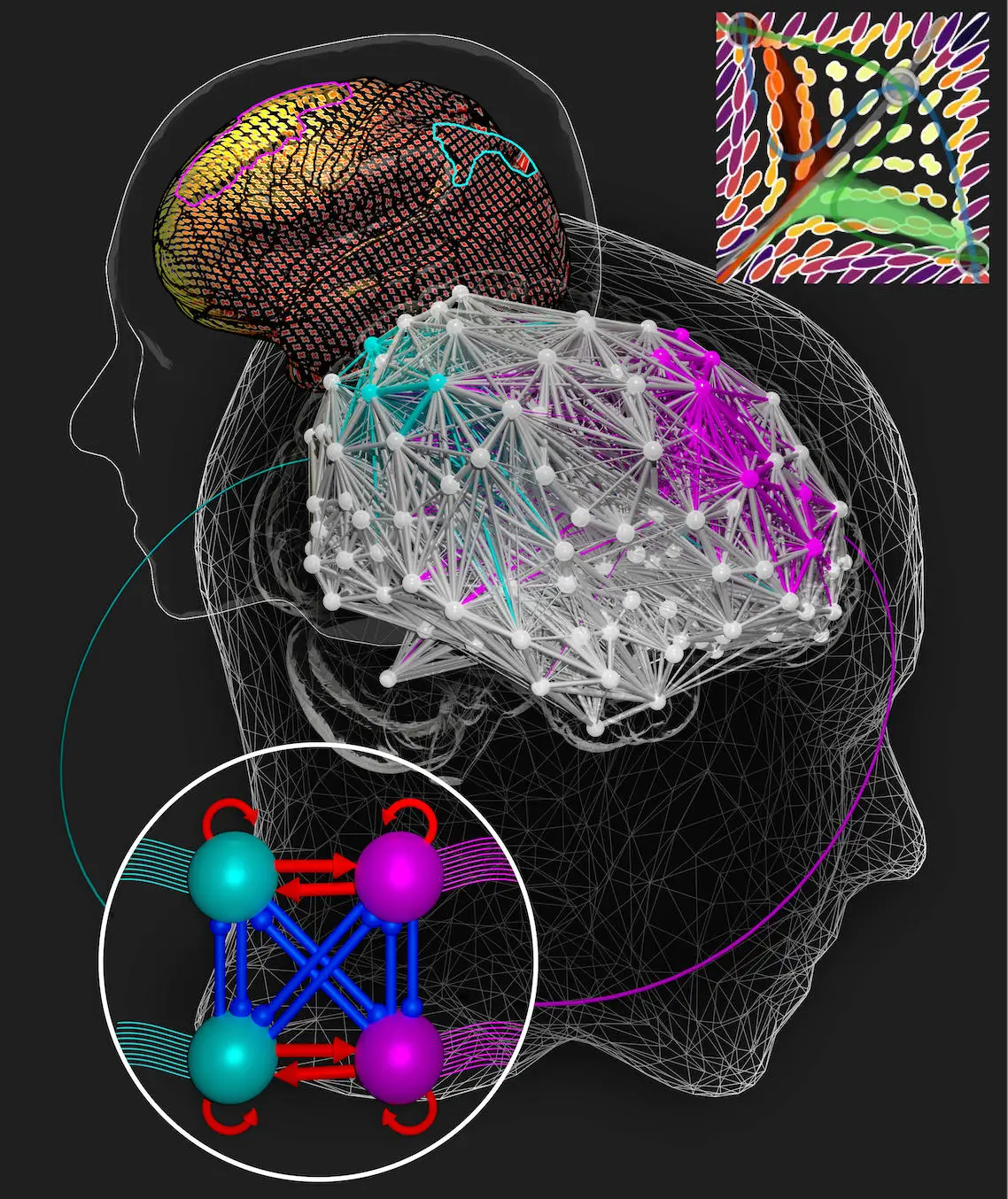Recent research challenges the long-held belief that faster cognition equals superior intelligence. The study suggests that those with high fluid intelligence actually spend more time on intricate problems due to their brain’s synchronized activity, which supports extensive evidence examination and problem-solving. Acknowledgements: Petra Ritter
Is there a direct correlation between speed of thinking and problem-solving prowess in intelligent individuals? Fresh insights from the Human Brain Project at Charité University Berlin and their partner at University Pompeu Fabra in Barcelona cast doubt on this widely accepted assumption within the realm of intelligence research.
The journal Nature Communications recently published the results of their groundbreaking study.
Utilizing a biology-centric approach, the researchers created 650 personalized brain network models (BNMs). Data from the Human Connectome Project facilitated the construction of these BNMs, allowing the team to imitate the brain’s problem-solving operations.
The team compared insights from the brain simulations with real-world data from the 650 test participants who took the Penn Matrix Reasoning Test (PMAT), a sequence of progressively challenging pattern-matching tasks. The PMAT results were then translated into measurements of the participants’ fluid intelligence (FI), broadly defined as the capacity to make complex decisions in unfamiliar circumstances.
According to Petra Ritter of Charité University, the senior author of the study, “Those with a higher fluid intelligence (FI) score took longer to resolve more challenging tasks compared to those with lower FI scores. They only demonstrated faster response times when answering simpler questions.” This trend was first noticed in their simulations and later substantiated by the empirical data from the intelligence test participants. Ritter’s lab and several other research groups at HBP apply brain simulation alongside observational data to establish a theoretical model of brain function.
In this scenario, brain simulation was used to investigate the connection between functional and structural brain connectivity and cognitive performance. While a more synchronized brain excels at problem-solving, it doesn’t necessarily work faster. “Lower synchronization leads to decision-making circuits in the brain reaching conclusions more rapidly, whereas higher synchronization facilitates more thorough evidence integration and a more reliable working memory,” explains Ritter. “Although it may seem intuitive that taking more time and considering more evidence leads to better problem-solving and solutions, we not only substantiate this empirically but also demonstrate how these performance disparities stem from the dynamic principles in personalized brain network models. This presents new evidence that questions a popular notion about human intelligence.”
The researchers incorporated previously established local circuit models of working memory (WM) and decision-making (DM) – both crucial for intelligence – into The Virtual Brain (TVB), which facilitated a whole-brain level simulation.
A multi-scale brain modeling technique was used to conduct the simulations; brain imaging data were processed with automated containerized pipelines. The sensitive brain data were processed in a secure Virtual Research Environment of EBRAINS Health Data Cloud, a technology accessible to the global research community via EBRAINS.
The study aims to understand how biological networks influence decision-making, with the intention of developing bio-inspired tools and robotic applications, rather than determining the ideal speed of thought. Therefore, the modelling of brain dynamics associated with intelligent decision-making presents a promising strategy for creating smart applications. “We believe that in the future, models that are more biologically accurate may surpass traditional AI,” Ritter anticipates.
Reference: “Learning how network structure shapes decision-making for bio-inspired computing” by Michael Schirner, Gustavo Deco, and Petra Ritter, 23 May 2023, Nature Communications.
DOI: 10.1038/s41467-023-38626-y
Table of Contents
Frequently Asked Questions (FAQs) about Brain Synchronization and Intelligence
Q: Does intelligence correlate with faster thinking?
A: No, according to the new study, intelligence does not necessarily equate to quicker thinking. The research suggests that individuals with higher fluid intelligence actually take more time on complex problems due to their brain’s synchronized activity, allowing for deeper evidence consideration and problem-solving.
Q: What was the methodology of the study?
A: The researchers constructed 650 personalized brain network models using data from the Human Connectome Project. These models simulated the brain’s processes during problem-solving. The observations from the brain simulations were compared to empirical data from participants who took the Penn Matrix Reasoning Test (PMAT) to measure their fluid intelligence.
Q: What were the key findings of the study?
A: The study found that individuals with higher fluid intelligence scores took more time to solve difficult tasks compared to those with lower scores. However, they were quicker in responding to simple questions. The simulations and empirical data supported this trend, challenging the common notion that intelligence is directly linked to faster thinking.
Q: How does brain synchronization affect problem-solving?
A: The study suggests that a more synchronized brain is better at solving problems, but not necessarily faster. Reduced synchronization leads to faster decision-making but may result in premature conclusions. Higher synchronization allows for better integration of evidence and a more robust working memory, which leads to better problem-solving outcomes.
Q: What is the significance of the research?
A: The research challenges the traditional belief that intelligence is tied to quick thinking. By demonstrating the importance of brain synchronization and deeper evidence consideration, it provides new insights into understanding how the brain works and may contribute to the development of bio-inspired tools and smart applications in the future.
More about Brain Synchronization and Intelligence
- Nature Communications – The published research article in the journal Nature Communications.
- Human Brain Project – The official website of the Human Brain Project, which contributed to the research.
- Charité University Berlin – The website of Charité University Berlin, where the study was conducted.
- University Pompeu Fabra – The official website of University Pompeu Fabra, a partner institution in the study.
- The Virtual Brain – Information about The Virtual Brain, the platform used for brain simulations in the research.
- EBRAINS – The official website of EBRAINS, a platform providing access to brain data and technologies used in the study.


